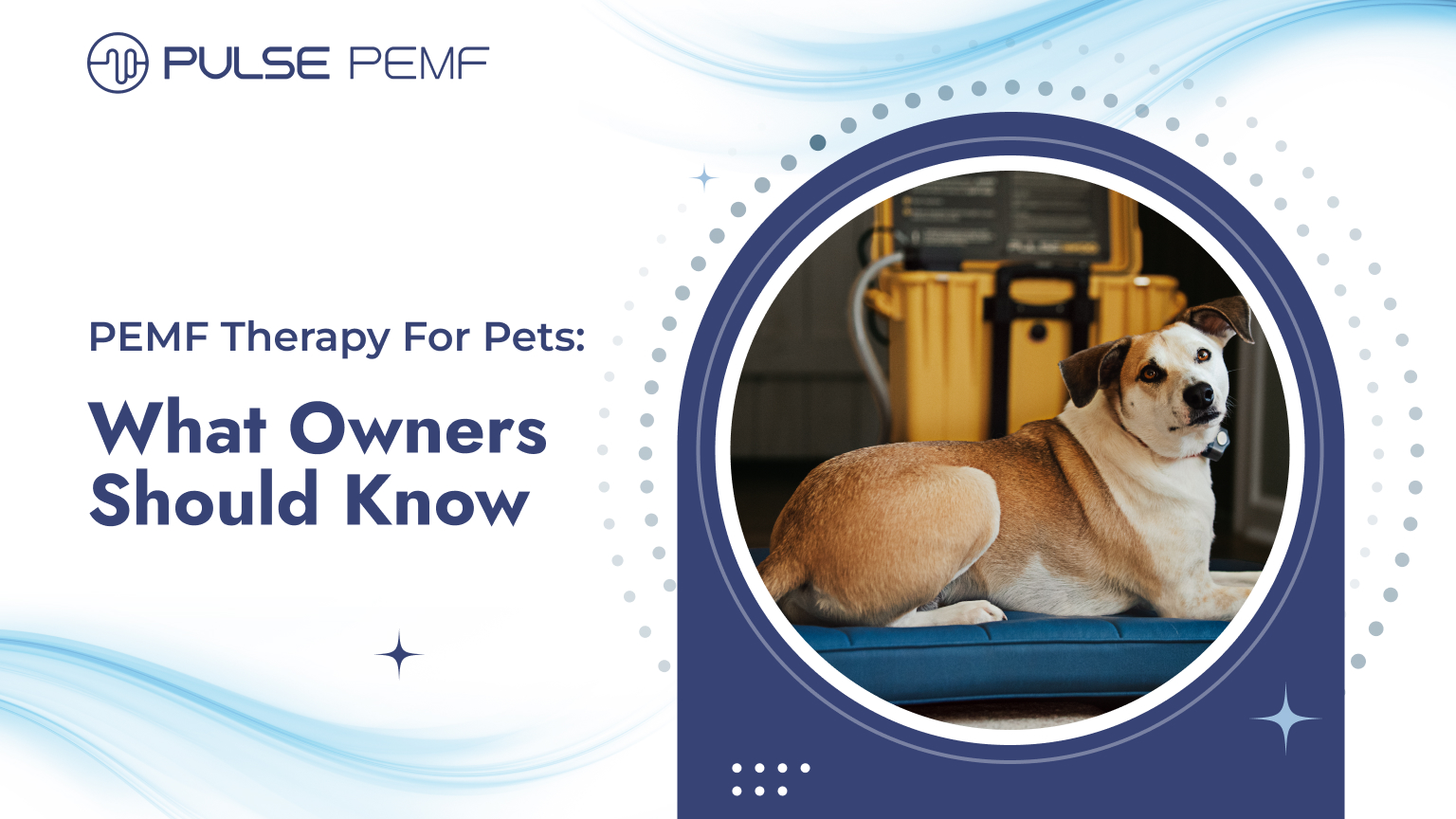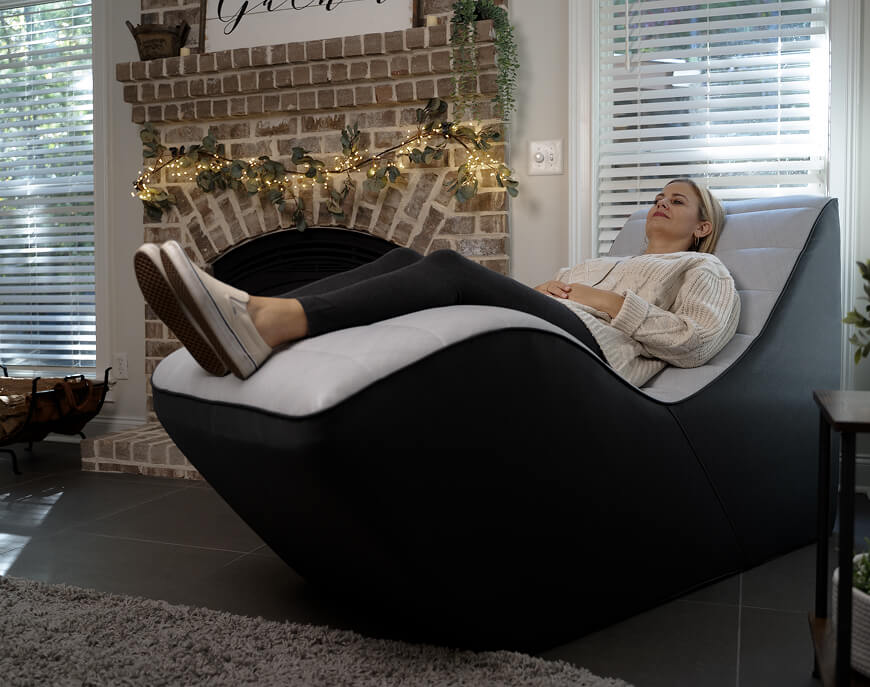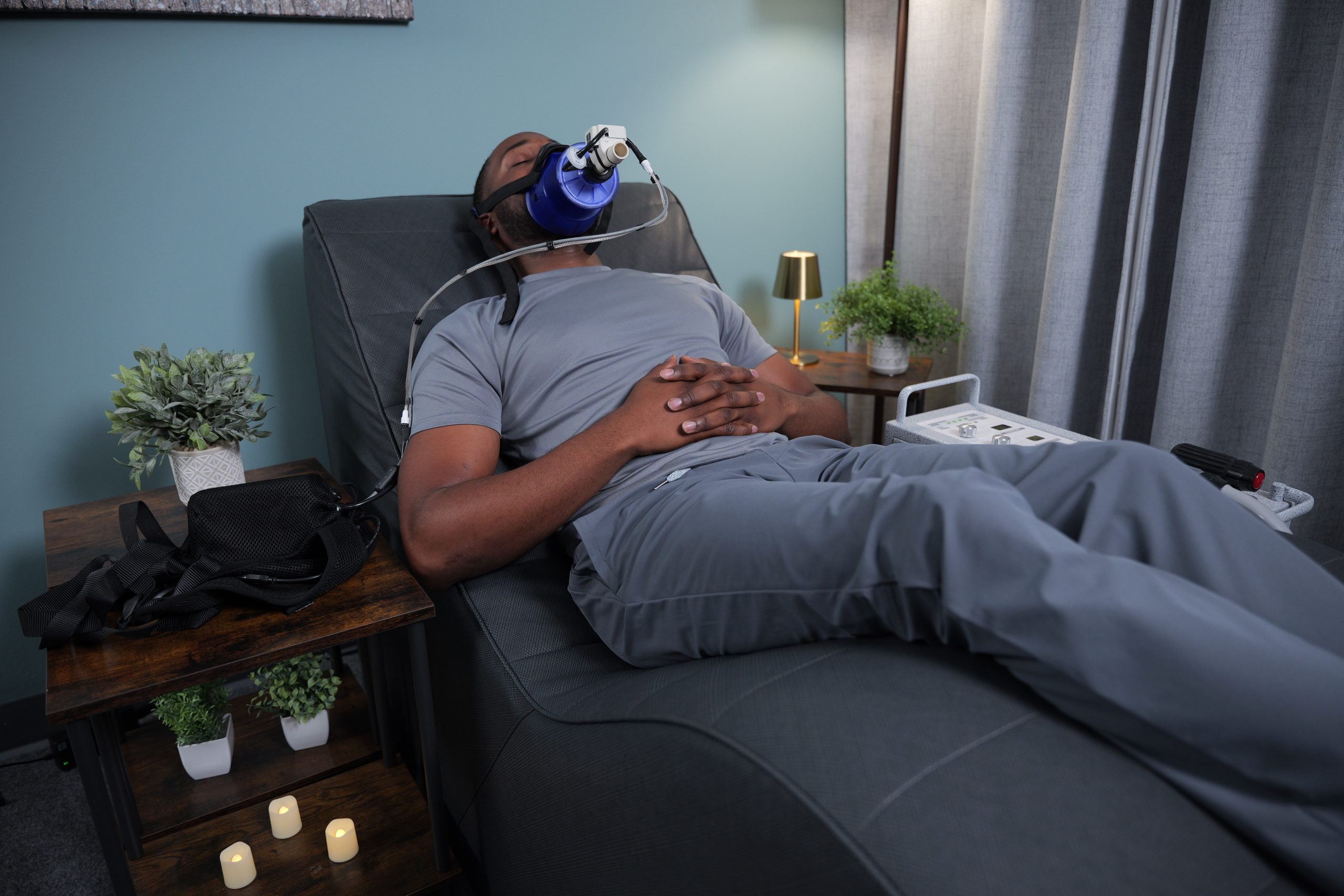As a pet owner, you always want the best for your furry companion. You provide them with endless belly rubs, the tastiest treats, and all the love in the world.
But what about when they’re not feeling their best? Maybe your senior dog struggles with stiff joints, or your playful kitten is recovering from an injury.
That’s where PEMF therapy might help!
PEMF therapy is a natural, drug-free approach to wellness that’s gaining positive traction in both human and pet care. It uses electromagnetic pulses to support the body’s natural self-healing abilities at the cellular level.
The best part? It’s natural, safe, and generally non-invasive.
In this blog, we’ll explore how PEMF therapy may benefit your pet and what to consider before giving it a try.
Key Considerations Before Starting PEMF
PEMF therapy sounds great, but how do you know if it’s right for your pet? Here are some key things to consider before starting.
Understanding the Needs of Your Pet
The first step is to think about your pet’s individual needs. PEMF therapy has been shown to be helpful in many ways for animals, including:
Increased Range of Motion: Does your dog struggle to jump on the couch anymore? PEMF therapy may help by promoting circulation and reducing stiffness. This can allow your pet to move with greater ease and enjoy those playful moments again.

Enhanced Recovery: Is your pet recovering from surgery or simply dealing with a minor injury? PEMF therapy can be a valuable addition to their wellness journey. The electromagnetic pulses interact with your pet’s cells to support their natural self-healing processes.
Healthy Joint and Cartilage Function: As pets age, joint health can become a concern. PEMF therapy may support healthy cartilage function, potentially reducing discomfort associated with certain conditions.
Reduced Muscle Discomfort and Pain: Muscle soreness after a long walk or playtime can be a drag for your pet. PEMF therapy is thought to help alleviate muscle tension and discomfort, keeping your furry friend feeling happy and active.
Support General Relaxation: Does your pet get anxious during thunderstorms or vet visits? Animals often experience PEMF as a soothing, restorative modality that can promote a sense of calm.
Choosing the Right PEMF Device
Now that you understand the potential benefits of PEMF therapy for your pet, let’s talk about choosing the right device. Here are some factors to consider:
Pet Size: Different devices are designed for different pet sizes. Pulse offers a range of PEMF devices specifically tailored to your pet’s needs, from petite pups to larger breeds. Explore our options here.
Ease of use: Look for a device that’s easy to operate and comfortable for your pet. Pulse devices are designed with user-friendliness in mind, featuring clear instructions and simple controls.
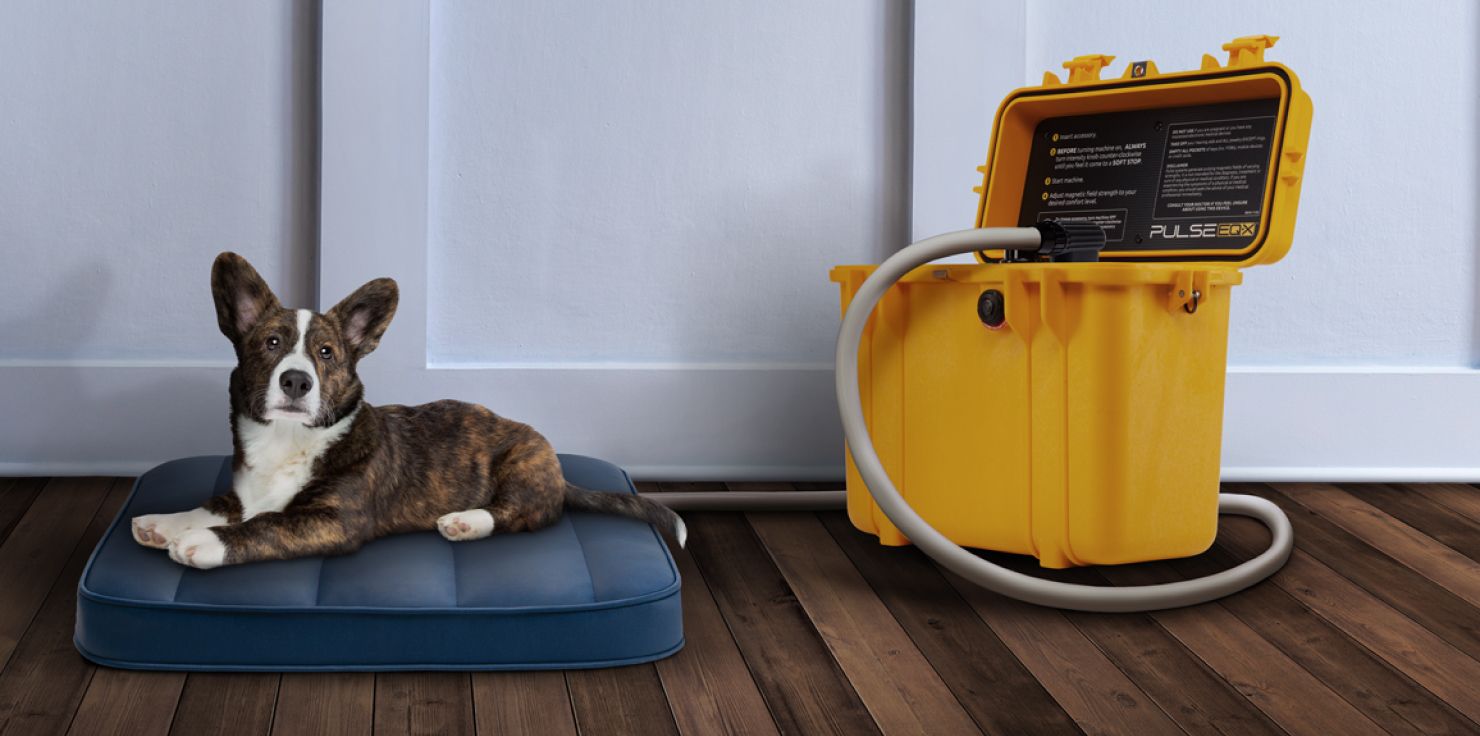
Customizable Options: Consider the features you might find valuable. Does the device offer different frequency or intensity levels? Pulse devices provide adjustable settings for a more customized experience.
By taking these considerations into account, you can make an informed decision about whether PEMF therapy is right for your pet.
Frequently Asked Questions About PEMF Therapy for Pets
PEMF therapy is a new and exciting approach to animal wellness, but it’s natural to have questions. We’re here to answer some of the most frequently asked questions about using PEMF therapy on your pet:
Is PEMF Therapy Safe For All Pets?
PEMF therapy is generally considered safe for most pets. However, there are a few exceptions. It’s always best to consult with your veterinarian before starting any new therapy, including PEMF. Here are some situations where PEMF therapy is not recommended:
- Pregnant pets
- Pets with any implanted electronic devices (microchips are okay!)
- Pets with active bleeding
- Pets with any issue that has not been evaluated by a veterinarian
How Often Should I Use PEMF Therapy on My Pet?
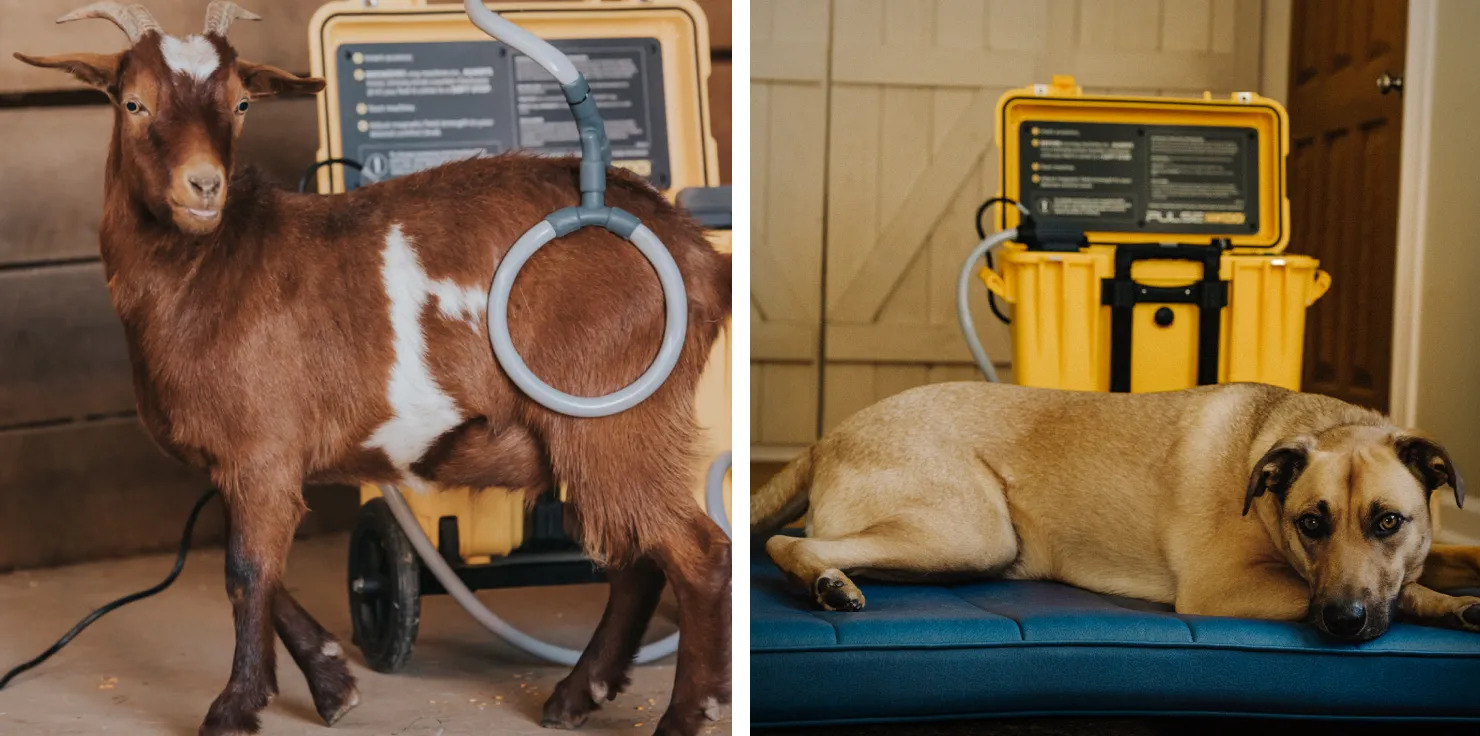
The recommended frequency of PEMF therapy will depend on your pet’s individual needs and the specific challenge you’re targeting. Generally, most pets benefit from daily or every-other-day sessions. Discuss with your veterinarian and PEMF device manufacturer to determine the best frequency for your pet.
Can PEMF Therapy Replace Traditional Veterinary Care?
Absolutely not! PEMF therapy is a complementary therapy, meant to be used alongside traditional veterinary care. Think of it as an additional tool in your pet’s wellness toolbox. Always consult with your veterinarian for any health concerns your pet may have.
By addressing these common questions, we hope to empower you to make informed decisions about PEMF therapy for your pet.
Integrating PEMF Therapy Into Your Pet’s Routine
Now you might be wondering how to incorporate PEMF therapy into your pet’s routine. Here are some practical steps for a smooth introduction:
Start Slow: Like any new experience, it’s best to introduce PEMF therapy gradually. Begin with short sessions (around 5-10 minutes) and observe your pet’s reaction. You can gradually increase the duration as your pet becomes accustomed to it. If undergoing sessions with a PEMF professional, they can advise you on the best duration for your pet.
Create a Positive Experience: Make PEMF therapy a positive experience for your pet. Use their favorite blanket or bed during sessions, and offer praise and affection throughout. This will help them associate PEMF therapy with relaxation and positive emotions.
Consistency is Key: For optimal results, aim for consistent PEMF therapy sessions. Whether it’s daily or every other day, stick to a routine that works for you and your pet. If undergoing sessions with a PEMF professional, they can help you determine the best frequency for your pet.
Monitoring and Evaluating Progress
So, how do you know if PEMF therapy is making a difference for your pet? Here are some tips for tracking your pet’s response:
Observe their behavior: Are they showing increased mobility, energy levels, or playfulness? Do they seem less stiff or sore?
Monitor their activity level: Are they engaging in more activity or showing renewed interest in walks and playtime?
Document any changes: Keep a journal to track your observations and any improvements you notice in your pet’s behavior or mobility.
If you have any concerns about your pet’s response to PEMF therapy, consult with your veterinarian and PEMF Professional. They can help you determine if PEMF therapy is the right fit for your pet and offer alternative solutions if needed.
Conclusion: Supporting Your Pet’s Health with PEMF Therapy
PEMF therapy offers a natural, non-invasive approach to enhancing your pet’s well-being. Ready to explore the possibilities?
Visit our website at https://pulsepemf.com to learn more about how PEMF therapy can help your pet thrive!

